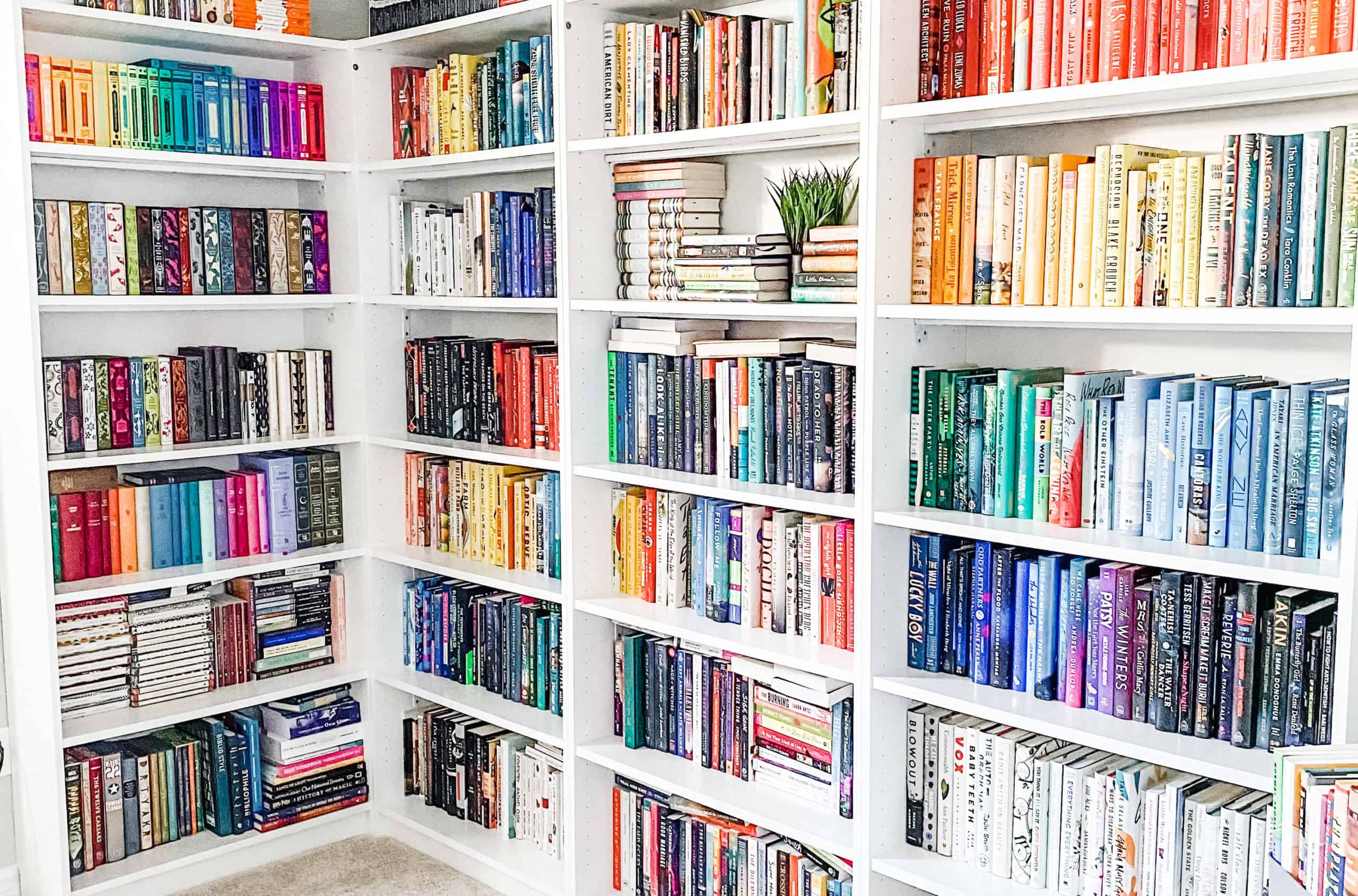Last Updated on January 18, 2024 by BiblioLifestyle

For avid readers, keeping track of the books we read can be a challenge. That’s why in a separate post, I talk about the 5 Different Ways To Track Your Reading. The reality is that sometimes we forget the titles of novels we enjoy or find ourselves unable to recall the details of a plot. But if we keep a reading journal, it can help us record our journey through literature, serving as a reminder of the books we’ve read, our thoughts and opinions, and even our growth as readers. In this article I will share some reading journal ideas, from tips on how to create and maintain a reading journal, as well as give you some prompts to get started.
Why Keeping a Reading Journal is Beneficial
Aside from being a record of your reading journey, keeping a reading journal has several benefits. It helps you reflect on what you’ve read and identify patterns, whether it’s in terms of genre, author, or theme. It also encourages you to think critically about what you read, which can lead to a deeper understanding of literature.
Should I start a reading journal?
Absolutely, starting a reading journal can be a rewarding experience for anyone who enjoys reading. It not only helps to deepen your understanding of the books you read but also enriches your overall reading experience. A reading journal allows you to reflect on the themes, characters, and emotions that books evoke, transforming reading from a passive activity to an active engagement. Furthermore, a reading journal serves as a personal trove of your literary journeys over time, which you can revisit and cherish at any point. It can be particularly helpful if you’re aiming to read more consciously and thoughtfully or if you’re trying to improve your analytical skills. But most importantly, your reading journal is a space that is entirely yours – to celebrate your love for books, explore reading journal prompts, and to freely express your thoughts and ideas.

Tracking Your Reading: 13 Reading Journal Ideas
I’m sharing thirteen things you can track in your reading journal, and we hope these ideas will provide some inspiration for you to get started or improve your current process.
BOOKS YOU HAVE READ
We know we are stating the obvious here but keeping track of the books you’ve read is a great and easy way to start. We find that most readers organize these reads by month. Some readers also keep track of pages they’ve read per day, tally them at the end of each week and then tally the numbers again at the end of the month.
You can also break down your books read by format – hardback, paperback, ebook, audiobook.
BOOK YOU WANT TO READ
In a separate journal post, we highlighted this as one of the 3 Things You Can Do To Improve Your Reading Life, and we discussed this point in great detail. In summary, keep a list of the books you want to read (title and author) and include the date you are adding this title to your list, why you want to read this title, and who recommended it to you. These three bits of information can help you remember why these books are on your list and even get you excited about them all over again. I find it extremely helpful when browsing my journal and deciding what to read next.
BOOK YOU HAVE PURCHASED OR RECEIVED
Our social media, influencer-driven, super interactive authors, publishers, and marketing companies world, plus our ability to purchase books with three clicks – keeping track of newly acquired books is probably a good idea.
Whether you keep a physical list or use your favorite apps to scan barcodes, you can compare the number of new books you’ve accumulated versus the number you’ve read every month.
If you want to kick it up a notch, take inventory of all the books you own and separate them into two lists – read and unread. Then you can see how much you add to your existing home library and TBR shelf every month.
BOOKS YOU’VE GIVEN AWAY OR DONATED
If you’ve decided to track the number of new books you’ve acquired, you can also track the books you’ve given away or donated. You can then compare and keep track of the books you’ve acquired versus the ones you have given away.
If you have an inventory of all the books you own, you can also see the number of unread books sitting on your TBR shelf.
INFORMATION ABOUT THE AUTHOR
If you are interested in reading books written by more diverse authors or a specific group that is important to you personally, you need to track the authors who write the books you read.
Basic categories you can start with include: female, male, non-binary. You can kick it up a notch and include categories on race, ethnicity, cultures, subcultures, and social groups.

INFORMATION ABOUT THE PROTAGONIST, MAIN CHARACTERS
Similar to tracking information on authors, you can also track information about the protagonist and other main characters represented in the novel. Because the characters portrayed are not always from the same group as the author – that might be something you want to differentiate and track in your reading journal.
GENRES
Keeping track of the genres you read is a surefire way to discover the kinds of books you enjoy reading, and it highlights the genres you’re slacking off on if your goal is to read across genres. You can also track the number of books you’ve read per genre and make it into a little graph within your journal.
RATINGS AND REVIEWS
Giving each book you finish reading a rating or writing a short review will be beneficial when deciding which titles to recommend to others. It also helps you reflect on why you enjoyed the book or what could have been done better. You can also use the ratings and reviews as a reference when writing blog posts or discussing books with others.
BOOKS YOU DNF AND WHERE YOU STOPPED
We all have those books that we just can’t seem to finish. Maybe the plot is not engaging or the characters are unlikable. Whatever the reason may be, it’s helpful to track these books and the specific point where you decided to stop reading. This will not only help you avoid re-reading them but also serve as a reminder of why you didn’t enjoy the book.
BOOKS YOU RE-READ
For some readers, re-reading a favorite book can be just as enjoyable as reading it for the first time. Keeping track of the books you re-read can give insight into your reading preferences and also serve as a reminder of why you love these books. You can even make notes on how your perception of the book may have changed since your last read.
FAVORITE QUOTES AND PASSAGES
As avid readers, we come across amazing quotes and passages that resonate with us. Keeping track of these quotes in your reading journal allows you to easily refer back to them whenever you need some inspiration or just want to revisit a favorite quote.
PERSONAL READING GOALS
Setting personal reading goals is a great way to challenge yourself and stay motivated. Use your reading journal to keep track of these goals and your progress. This could be anything from the number of books you want to read in a year, to challenging yourself to read a certain genre or author.
PERSONAL THOUGHTS AND REFLECTIONS
Last but not least, your reading journal should also serve as a space for you to write down your personal thoughts and reflections on the books you’ve read. Whether it’s a review, analysis, or simply what you enjoyed or didn’t enjoy about the book, writing it down can help you process your thoughts and also serve as a reference for future readings.

Reading Journal Prompts
If you’re new to keeping a reading journal or are looking for some prompts to spice up your current entries, here are some ideas to get you started:
- What was your first impression of the book? Did it change as you continued reading?
- Who is your favorite character and why?
- Which scene or chapter did you find most memorable and why?
- How did this book make you feel? Did it evoke any emotions or reactions from you?
- Would you recommend this book to others? Why or why not?
- How does this book compare to other books you’ve read by the same author?
- Did this book challenge any of your beliefs or perspectives?
- What lessons did you learn from this book?
- If you could change anything about the story, what would it be and why?
Feel free to use these prompts as a guide, but don’t limit yourself to them. Use your journal as a space to explore your thoughts and feelings about the books you read.
Tips for Maintaining Your Reading Journal
- Find a journal or notebook that you love. This will motivate you to write in it regularly.
- Set aside time each day or week to write in your journal. Make it a habit.
- Don’t worry about making your entries perfect. Write freely and let your thoughts flow.
- Use different colors, stickers, washi tapes, or any other creative materials to spice up your journal.
- Don’t be afraid to revisit old entries and reflect on how your thoughts about a book may have changed over time. It’s always interesting to see how our perspectives can shift.
- Have fun with it! Your reading journal should be an enjoyable and personal space for you to express your thoughts and feelings on the books you read.
My Recommended Journaling Supplies
My recommended preprinted reading journals:
My recommended bullet journal and must-have supplies:

Frequently Asked Questions about Reading Journal Ideas
Do I have to write about every book I read?
No, you don’t have to write about every book you read. The purpose of a reading journal is to provide a space for you to reflect and express your thoughts about the books that have made an impact on you in one way or another. If a book doesn’t evoke strong feelings or thoughts, there’s no obligation to write about it. Your reading journal is your personal space, and you have the freedom to choose what to include in it. Remember, the ultimate goal is to enhance your reading experience, not to add stress or make reading feel like a chore.
How often should I write in my reading journal?
There’s no hard and fast rule on how frequently you should write in your reading journal. It truly depends on your reading habits and personal preference. Some people choose to jot down thoughts immediately after finishing a book, while others may prefer to write weekly or monthly summaries. The key is consistency. Set a schedule that works for you and stick to it. Your reading journal is meant to enhance your reading experience, not become a burdensome chore. So, write in it as often as it feels beneficial and enjoyable to you.
What should be included in a reading journal?
A reading journal should include any information that enhances your reading experience and aids in your reflection and understanding of the books you read. This may vary from person to person, but there are some commonly included elements. At a basic level, this could be the title of the book, the author’s name, and the date you started and finished reading. Furthermore, you might want to include a brief synopsis of the book and your personal thoughts, reflections, and reactions to the book. You can also track memorable quotes, passages, and characters. In your reading journal, you may want to note any themes or motifs you noticed, analyze the author’s writing style, or make connections to other books, ideas, or experiences. Some readers also like to include a rating system to help them remember how much they enjoyed each book. Lastly, consider adding responses to reading journal prompts to deepen your understanding and engagement with each book. Remember, your reading journal is unique to you and can include anything that enhances your personal reading journey.
How do I make my own reading journal?
Creating your own reading journal is an enjoyable and personal process. Here are some steps to get started:
- Choose the Right Journal: Start by selecting a notebook or journal that suits your preference. It could be a simple spiral notebook, a hardbound journal, or even a digital platform like a blog or an app on your phone. Choose something that you’ll be comfortable to write in and suits your lifestyle.
- Design Your Layout: Next, decide on the layout of your journal. You can dedicate a page for each book, or you can opt for a more condensed layout. Draw columns or sections for different types of information like book title, author’s name, start and end dates, and personal notes.
- Identify Key Elements: Decide what components you want to include for each book. This could be a summary, your thoughts, favorite quotes, character notes, or answers to reading journal prompts.
- Get Creative: Decorate your journal to make it visually appealing, if you wish. Use stickers, washi tapes, color pens, or doodles. This can make the process of journaling more enjoyable.
- Start Writing: Now that your journal is set up, start writing. Remember, there are no rules. The goal is to enhance your reading experience, so write in a way that works for you. You can write as little or as much as you want about each book.
- Keep It Up: Make journaling a part of your reading routine. It can be helpful to set aside specific times for writing in your journal.
Remember, your reading journal is a reflection of your reading journey. Make it personal, make it fun, and most importantly, make it yours.
Do you track your reading, or are you planning to start?
What do you currently track in your reading journal? Are you planning to try something new? Do you have any reading journal ideas? Let us talk about all things reading journals in the comments.
ADDITIONAL CONTENT:




I have been using goodreads for years, but would like to start a physical reading journal – love your suggestions!
I love physical journals! I also find that my TBR entries are a lot more thoughtful than simply clicking and adding to a list.